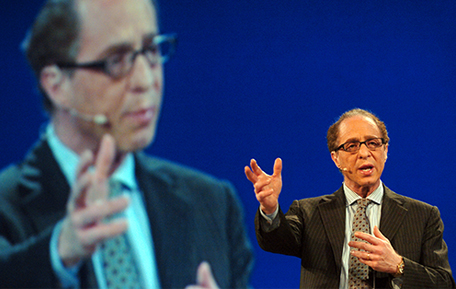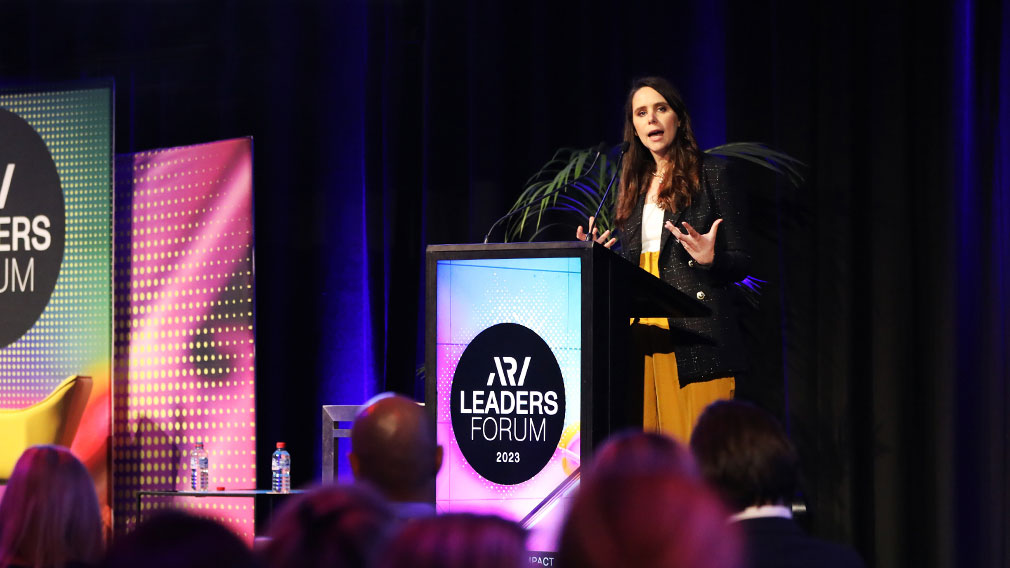Why we’re (still) surprised by tech advances

The pace of technology change – especially in the case of big data and artificial intelligence – is increasing exponentially. (Getty)
Despite the stunning progress made towards realising many of the wildest technology ideas in the Jetsons, first aired in the 1960s, we humans aren’t great predictors of the future.
For most of history, our experience has been “local and linear”. Over thousands of years, not much change occurred generation to generation.
But, as futurist Ray Kurzweil describes well in The Singularity Is Near, the pace of technology change is increasing not “linearly” but “exponentially”. Unsurprisingly, we are finding ourselves surprised by advances, even within our own working life.
Traditionally in a single technology lifecycle we would see a slow start, the exponential growth period and then a slowdown as the technology matures. In recent times, however – especially in the case of cloud, big data, and artificial intelligence technologies – advances are coming closer together, further driving the speed of change.

Futurist Ray Kurzweil describes the pace of technology change as "exponential" rather than "linear". (Getty)
These days, the rule of thumb thus has to be: expect to be surprised; then plan accordingly, especially when making technology decisions.
In 2018, the greatest challenge for most businesses is arguably the ability to leverage data to create better customer experiences and operational efficiencies – something that requires big changes to the way we manage and architect our systems.
Data has surged to “extreme” levels to the point where we can’t afford the processing and time delays of traditional structured data management. It’s become critical to be able to process and analyse data on demand, during an actual customer interaction.
At the same time, cloud capabilities are advanced to the point where enterprises can leverage them safely.
Scale up and scale down computing patterns and cloud-based “pay by use” economics allow us to deal with more variable demands, enabling a greater test and learn approach with digital and data innovation. Streaming data capture and processing capabilities are relatively mature and will support this growing demand for relevant and timely access to these large data sets.
On the flip side, legacy, monolithic, system architectures are too slow to change, and not able to leverage new data sources.
We’ve found most everyday interactions with banking customers can be solved in new ways by leveraging scalable data platforms. By having more and more of the available data managed by them, insights and experiences can be generated in real time and delivered via application programming interfaces – or APIs – directly to digital channels. It creates personalised and meaningful experiences for each customer interaction.

It’s become critical to be able to process and analyse data on demand, during an actual customer interaction. (Getty)
Over time, as capabilities around AI and deep learning evolve the bank will likely move from being predictive around the customer experience to becoming self-correcting during each experience and in future interactions.
For example, where a customer has a sum of money in a transaction account, they might be prompted about a better interest rate available on a savings account. But it’s unlikely to be a great customer experience to prompt them about starting a savings account when they have a bill to pay. A bank should be able to know when a customer logs on to their banking app that they have a bill payment due, so why not have the app help them pay the bill instead. Then prompt them if they still have any money in their account.
At the heart of creating this customer-centric service model and support a banking environment that is fast and easy to change is Westpac’s Customer Service Hub program. It has entailed a massive re-engineering of our systems architecture, moving the data and analytics – both logically and physically – from its traditional role at the bottom of the banking “stack” into the Hub, giving access to real time data, processing and relevant customer insights that can then be integrated with processes to create the best possible customer experience.
IT leaders have a responsibility to help steer organisations so they can better compete in a digital and data centric world where the speed of advancement is exponential, not linear.
In doing so, “exponentially thinking” technology leaders have two critical roles.
First, providing leadership and guidance to businesses to enable them to understand the change required. These concepts can be difficult to explain, so technology leaders need to closely understand the business needs and company’s strategic direction. At Westpac, the tech group have worked closely with educators at MIT to build a common language and framework for Westpac’s businesses and leaders.
Second, we must lead our technology teams to not just understand the change, but also reinforce the pace of ongoing change. The tendency for people, especially when under pressure, is to revert to what they know. And it is unlikely organisations can afford to slow down technology delivery in order to allow people to make the change required at a more relaxed pace.
It’s an exciting, uncertain and, sometimes scary, future we face. We don’t have all the answers to the challenges. And like all big incumbent organisations, we face many as the pace of change collides with our legacy systems, and traditional ways of operating.
But given we’re likely to again be surprised by technology advances that take place, all organisations – and people – have to face into this ‘exponentially changing’ world, quickly.
This article is based on a speech delivered today by Tim Whiteley at the FST Future of Financial Services Conference in Sydney.




